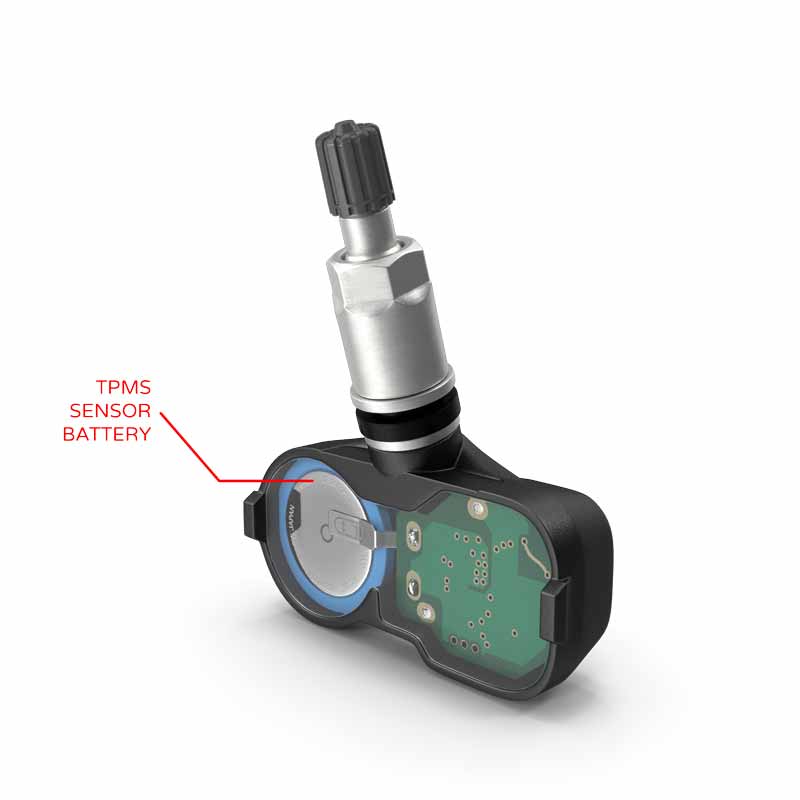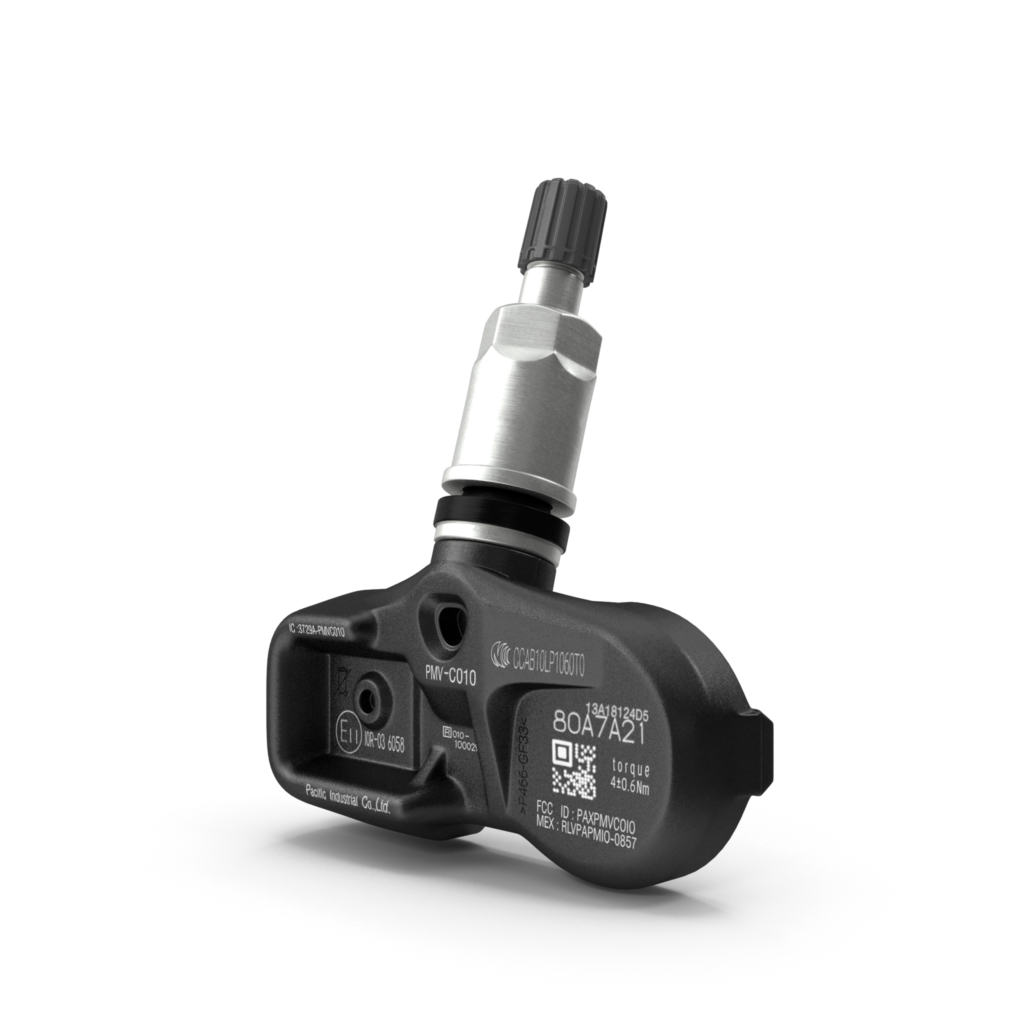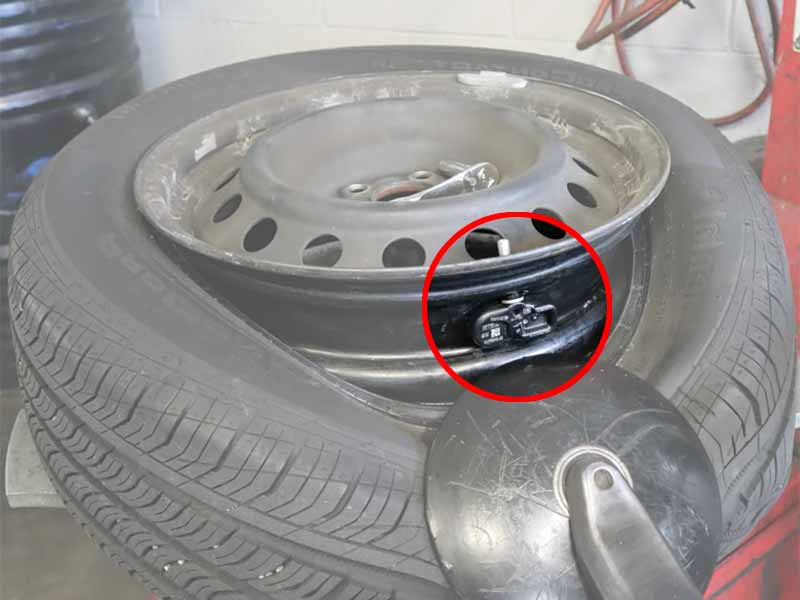Most tire pressure monitoring systems rely on individual air pressure sensors in each tire. These sensors don’t last forever and can fail due to physical damage or when a sensor battery runs out of power.
Do I Need To Replace TPMS When Replacing Tires?
You do not need to replace TPMS sensors when replacing tires. However, it can be convenient to have the service performed and save you some labor costs if your sensors are nearing the end of their battery life.
While you may not need to replace the TPMS sensors when you buy new tires, there are some excellent reasons to have them replaced when you’re changing tires.
Let’s take a closer look.
When Should TPMS Sensors Be Replaced?
When a tire pressure sensor fails, you should replace it as soon as possible to ensure you’re alerted to underinflated or flat tires before there is damage to the tire or a catastrophic blowout.
When your TPMS light flashes for 60 to 90 seconds when starting your vehicle, your TPMS system alerts you to a problem. Most TPMS problems that trigger the warning light to flash are dead sensor batteries.

Proactive TPMS sensor replacement is a good idea when the first sensor battery dies. Often, the other TPMS sensors will fail shortly afterward since the battery life of the sensors is very similar.
Replacing all of the sensors in your TPMS system will ensure your system continues working properly and keeping you and your family safe with minimal interruption.
Grouping all the labor into one tire service will save you money and time by preventing you from making multiple trips to your local tire shop.
Are TPMS Sensors Reusable?
TPMS sensors can be used with several tires and continue working correctly. You don’t need to replace your tire pressure sensors if you purchase a new set of tires.
If the battery in a sensor has died or a sensor has been damaged in some way that prevents it from functioning correctly, you’ll need to replace it. Otherwise, they should last many years at a minimum.

You can purchase new wheels and move the old TPMS sensors to the new ones. There may be some situations where the lesser-expensive snap-in sensors that are less adjustable may not fit properly in your new wheels, but this is rare.
The more adjustable clamp-in sensors can be positioned at different angles, which allows them to fit a wider selection of wheels. Clamp-in sensors are easily recognizable by their metal valve stem.
Do I Need A TPMS Rebuild Service Kit When Buying New Tires?
TPMS rebuild kits are recommended by most tire shops, and we recommend them as well. They are inexpensive and help ensure you won’t have leaks around the valve stem or failure due to corrosion around the threads of the securing nut.
Prior to 2008, when TPMS became mandatory, valve stems were replaced as part the process of replacing every tire. Valve stems are designed to be single-use components.
TPMS rebuild kits are essentially replacement valve stem seals and mounting hardware. They include the seals and the hardware that holds the stem in place. The sensor itself is not included.

TPMS Rebuild Service Kit Example
It’s not uncommon for corrosion to affect the metal hardware of the clamp-in TPMS sensor’s valve stem. Corrosion around the retaining nut threads can weaken the stem and make it surprisingly easy to snap off. This is especially true for vehicles that experience road salt in winter.
Cheaper snap-in style rubber valve stems are much less likely to have issues down the road, but they don’t provide the adjustability of metal clamp-in style stems and may not fit some wheels.
How Long Do TPMS Sensors Last?
The air pressure sensors used in most tire pressure monitoring systems usually have a battery life of 7 to 10 years, although they can last as little as 5 years.
If you’re purchasing tires at approximately the 5 to 7 year point into the life of your TPMS sensors, it could be a convenient time to have them replaced. There is no need to have this done prematurely, though.
If, on the other hand, you have one sensor that has already died, you should consider having the other TPMS sensors replaced. If one sensor fails, it is very likely the others will fail soon afterward. This is not a requirement but a suggestion that can save you time and money.

Having new TPMS sensors all installed at the same time will save you time and money.
Also, if you replace them one at a time, they will begin failing at more and more irregular intervals from each other, which will lock you into frequent visits to your local tire shop.
What Happens When A TPMS Sensor Battery Dies?
When a TPMS sensor battery dies, it will lose its connection with the TPMS computer, and the system will display the low tire pressure light on the dashboard. The low tire pressure light will flash for 60 to 90 seconds each time you start your vehicle until the sensor has been replaced.
It’s common for this to cause quite a bit of confusion. Many drivers need help understanding the difference between a TPMS warning light that is flashing or solid. Also, the flashing sequence can often go unnoticed since the light flashes for only 60 to 90 seconds when starting your car or truck.

Before a TPMS sensor battery completely fails, the TPMS sensor may have an intermittent connection with the tire pressure monitoring system and fail to correctly or consistently measure air pressure.
In addition to incorrect tire pressure, it may display the TPMS light even when you don’t have a flat tire or underinflated tire.
How Much Are TPMS Sensors?
OEM TPMS sensors can often cost $100 or more, while you can purchase an aftermarket TPMS sensor replacement for $25-$30 per sensor. This does not include the cost of mounting and balancing, which are services usually required to replace TPMS sensors.
Aftermarket TPMS sensors are usually very high quality and easier to program into your existing tire pressure monitoring system than OEM TPMS sensor replacement. This can save you even more money by reducing the time required for the tire technician to work on your vehicle.
Do New Tires Come With TPMS Sensors?
New tires do not come with new sensors. The cost of both the tires and the mounting and balancing don’t include the price of tire pressure monitoring sensors. There are separate costs for both the new sensors and their installation.
New sensors are not inexpensive enough to be included as part of the service. Also, there are several different types and styles of tire pressure sensors, so including them with the tires isn’t practical or cost-effective.
Can I Replace Just One TPMS Sensor?
It won’t cause any real problems to replace individual sensors, but it isn’t recommended. The reason is that when one sensor fails, the other TPMS sensors will likely fail shortly afterward.
It will save you time and money to have all of the sensors replaced at the same time by consolidating the labor cost and preventing you from having to spend time making several trips to your local tire shop.
Replacing only one sensor at a time will lock you into a cycle of making multiple trips to your tire shop since the sensors will no longer fail at similar times. Of course, you can replace them all at the same time down the road, but you will be shortening the usable battery life of at least one of the sensors.
Resources
Below are some links you may find helpful when learning about tires
Final Thoughts
Your tire pressure monitoring system will alert you to a drop of 25% or more in the recommended tire pressure by displaying the TPMS light in the instrument cluster. Because TPMS systems are only designed to alert you to this significant amount of air pressure loss, you should regularly check your tire pressure yourself.

Ensuring your tires are inflated to the recommended air pressure will ensure that your new tires will last as long as possible, wear evenly, perform their best, and give you the best possible fuel economy.
Good luck and happy motoring.







